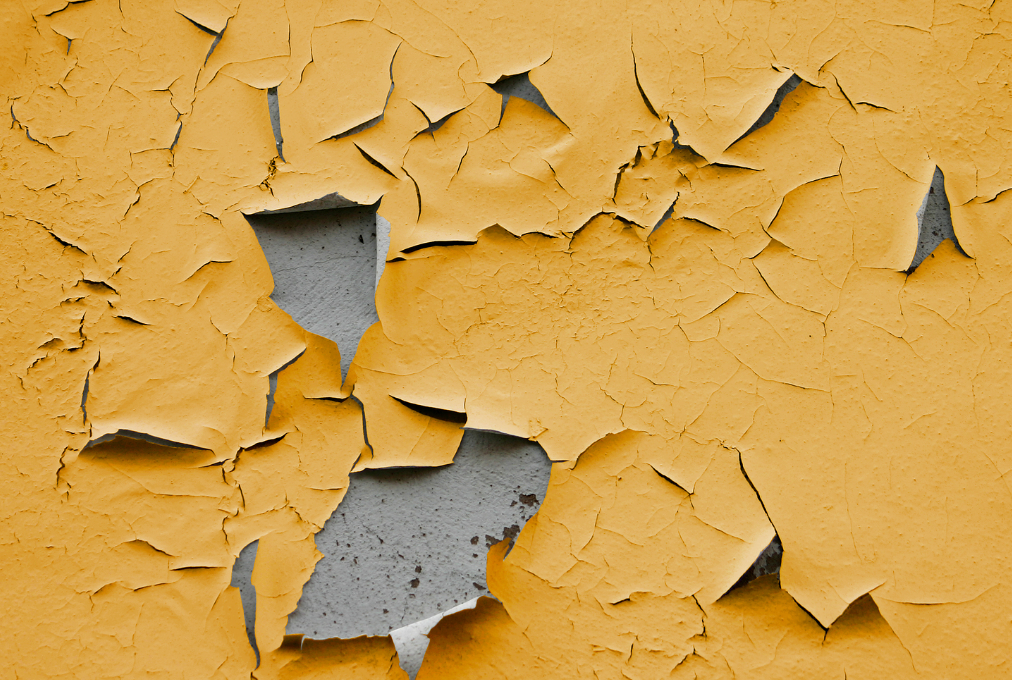How to Fix Paint Chips on Wall?
Paint chips on walls are a common issue, and they can be a real eyesore in your home or business. Whether they mar the interior or exterior surfaces, these imperfections are something no one wants to deal with. However, maintaining well-painted walls is essential not only for aesthetic reasons but also for the long-term protection of your property.
At Simpco Painting, we understand the significance of a beautifully painted space. As a professional painting service in Richmond, VA, we are committed to helping you address and resolve paint chip issues effectively. Our team of experienced painters has the expertise to transform your walls, making them look flawless once again. If you’re in Richmond, VA, and looking for a Painter in Richmond VA, we’ve got you covered.
In this guide, we’ll walk you through the steps to fix paint chips on your walls. Whether you’re dealing with minor imperfections or larger areas that need attention, our goal is to provide you with easy-to-follow instructions so you can achieve a smooth and attractive finish. Let’s get started on the journey to restoring the beauty of your interior and exterior spaces.
Assessing the Damage
Before you begin repairing paint chips on your walls, it’s essential to assess the extent of the damage. This step will help you determine the appropriate approach for addressing the issue.
Identifying Types of Paint Chips
- Surface Chips: These are the most common type and often occur due to impact or wear and tear. Surface chips are usually small and affect only the top layer of paint.
- Peeling Paint: When larger sections of paint start to peel away from the wall, it indicates a more significant problem. This could be due to moisture issues or poor paint adhesion.
- Cracks and Flaking: Cracks in the paint that lead to flaking are a sign of aging paint. They can occur on both interior and exterior walls.
Tools and Materials Needed
To effectively repair paint chips, you’ll need a few essential tools and materials. Gathering these items in advance will ensure a smoother process:
- Sandpaper: Select different grits, including coarse and fine, to smooth the surface.
- Putty Knife: Used for scraping and applying filler.
- Paint Scraper: Ideal for removing loose or peeling paint.
- Primer: Ensure it matches the type of paint you’ll be using.
- Paint: Choose the right color and finish to match your existing wall.
- Paintbrushes and Rollers: Depending on the size of the repair area.
- Painter’s Tape: To protect adjacent surfaces from unwanted paint.
- Drop Cloths: To cover and protect your floors and furnishings.
Having these tools and materials ready will streamline the paint chip repair process, making it efficient and effective.
Preparing the Surface
Once you’ve assessed the damage and identified the types of paint chips, the next crucial step is preparing the surface. Proper preparation ensures that your paint job will be smooth and long-lasting.
Cleaning and Sanding
Cleaning:
Before you start any repair work, it’s essential to clean the affected area thoroughly. Use a mixture of mild detergent and water to remove dirt, dust, and any loose paint. Rinse the area with clean water and allow it to dry completely before proceeding.
Sanding:
Sanding the damaged area is vital to create a smooth and even surface for painting. Follow these steps:
- Choose the Right Grit: Start with coarse-grit sandpaper to smooth down any rough edges and level the surface. Then, switch to a finer grit to create a smooth finish.
- Sand Gently: Apply gentle pressure while sanding to avoid damaging the underlying wall. Use circular motions and feather out the edges of the chipped area.
- Wipe Clean: After sanding, wipe away the dust with a clean, damp cloth. Ensure the surface is completely dry before moving on to the next step.
Filling and Priming
Filling:
Now that you’ve cleaned and sanded the damaged area, it’s time to fill in any gaps or chips. Use a high-quality patching compound or spackling paste to fill the damaged area. Follow these steps:
- Apply Filler: Use a putty knife to apply the filler, ensuring it’s evenly distributed across the damaged section. Feather the edges to blend it with the surrounding wall.
- Allow to Dry: Follow the manufacturer’s instructions for drying time. Typically, it takes a few hours to overnight.
- Sand Again: Once the filler is dry, lightly sand it to create a smooth and even surface.
Priming:
Before you apply the final coat of paint, it’s essential to prime the repaired area. Primer helps the paint adhere better and provides a consistent finish. Here’s what to do:
- Choose the Right Primer: Select a primer that matches the type of paint you’ll be using (latex or oil-based).
- Apply Primer: Use a paintbrush or roller to apply a thin, even coat of primer to the repaired area. Allow it to dry according to the product’s instructions.
Applying the Paint
Now that you’ve prepared the surface by cleaning, sanding, filling, and priming, it’s time to apply the paint. Properly applying the paint is crucial to achieving a seamless and attractive finish.
Choosing the Right Paint
Types of Paint:
Selecting the right type of paint is essential for a successful paint chip repair. Consider the following:
- Matching Paint: If you have leftover paint from the original project, use that to ensure a perfect color match. If not, take a small sample of the chipped paint to a paint store for a color match.
- Paint Finish: Choose a finish (e.g., flat, satin, semi-gloss, or gloss) that matches the existing finish on your walls.
- Interior vs. Exterior: Ensure that the paint you choose is suitable for either interior or exterior surfaces, depending on where the repair is needed.
Proper Painting Techniques
Brush vs. Roller:
Decide whether to use a paintbrush or a roller based on the size of the repair area.
- Paintbrush: Use a brush for smaller touch-ups and detailed work, ensuring precision and control.
- Roller: Rollers are ideal for larger areas, providing a smooth and even coat of paint quickly.
Thin Coats:
Instead of applying one thick coat of paint, it’s better to apply multiple thin coats. This ensures better adhesion, a smoother finish, and faster drying times.
Feathering:
When applying paint, feather the edges of the painted area to blend it seamlessly with the surrounding wall. This prevents noticeable transitions between the repaired spot and the rest of the wall.
Drying Time:
Allow each coat of paint to dry completely before applying the next one. Follow the manufacturer’s recommended drying times to avoid issues like peeling or uneven finish.
Clean-Up:
After you’ve finished painting, clean your brushes, rollers, and any other painting tools immediately with the appropriate solvent (water for latex paint or paint thinner for oil-based paint).
By following these painting techniques and selecting the right paint, you can ensure a professional-looking repair job. In the next section, we’ll cover the final touches to make your paint chip repair truly seamless.
Finishing Touches
After applying the paint and achieving a smooth repair, it’s time to add the finishing touches to ensure your paint chip repair seamlessly blends with the surrounding wall.
Blending and Feathering
Blending:
Inspect the repaired area to ensure it blends well with the rest of the wall. If you notice any discrepancies in color or texture, consider feathering the edges further. This can involve gently sanding and repainting the transition area to achieve a seamless look.
Feathering:
Feathering is the process of gradually reducing the thickness of the paint toward the edges of the repair area. It helps the new paint seamlessly merge with the existing surface. Use a fine-grit sandpaper to feather the edges, and then apply a final, thin coat of paint to the entire area for a uniform finish.
Sealing and Protecting
Sealing:
To protect your newly repaired paint, consider applying a clear sealant or topcoat. This additional layer provides extra durability and protection against future damage. Choose a sealant that matches the paint finish you used.
Regular Maintenance:
To prolong the life of your paint job and prevent future paint chips, practice regular maintenance. Keep an eye out for any signs of wear and tear and address them promptly. Regular cleaning and touch-ups will help maintain the integrity of your walls.
By focusing on these finishing touches, you can ensure that your paint chip repair not only fixes the immediate issue but also contributes to the overall longevity and appearance of your interior or exterior walls.
Final words:
Addressing paint chips on your walls is not only about aesthetics but also about protecting your investment. Properly assessing, preparing, painting, and finishing the repair job can leave your interior and exterior looking flawless. By following the steps outlined in this guide, you can achieve a seamless and professional result.
Maintaining a well-painted environment is key to enhancing the beauty and longevity of your space. Regular upkeep and addressing paint chips promptly will ensure that your walls remain in top condition for years to come.
If you’re in Richmond, VA, and find yourself in need of professional painting assistance, look no further than Simpco Painting. We’re here to help you transform your space. Contact us today at 804-840-9419 or visit our website at Simpco Painting for a free consultation or quote. Let us bring a fresh and vibrant look to your home or business.

